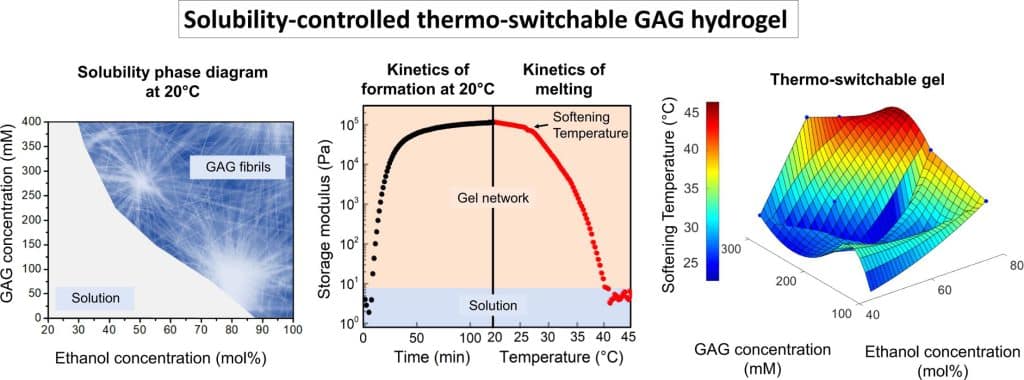Exploring the gel phase of cationic glycylalanylglycine in ethanol/water. I. Rheology and microscopy studies

Abstract
Hypothesis
The cationic tripeptide glycylalanylglycine (GAG) self-assembles into long, thick crystalline fibrils in an ethanol/water solution. At sufficiently high concentrations, the fibrils form a volume spanning hydrogel network. We report an extensive rheology and microscopy-based study regarding the self-assembly of GAG in ethanol/water solutions to understand the conditions for fibril formation as well as the thermal stability for future developments of this material.
Experiments
By systematically varying GAG concentration and ethanol fraction, we observe a two-dimensional fibril aggregate phase diagram. Microscopy studies shed light on the shape and size of fibrils as well as the macroscopic packing depending on conditions. The kinetics and evolution of the macroscopic fibril microstructure was investigated using rheology.
Findings
The mechanism of fibril formation is put into the context of a solubility framework, where ethanol reduces peptide solubility and induces self-assembly. The rate of fibril formation and strength of the gel can be controlled by peptide concentration and ethanol fraction. The faster rate of fibril formation leads to inhomogeneous packing of fibrils denoted by discrete dense fibril clusters. The solubility of the fibrils can be manipulated by temperature making the gel thermo-switchable, a property of interest for biomedical systems.
Publication Metadata
Authors
Keywords
Citation
Thursch L, DiGuiseppi D, Lewis TR, Schweitzer-Stenner R, Alvarez NJ. Exploring the gel phase of cationic glycylalanylglycine in ethanol/water. I. Rheology and microscopy studies, Journal of Colloid and Interface Science. 2020; 564: 499-509. DOI: https://doi.org/10.1016/j.jcis.2019.10.029.
